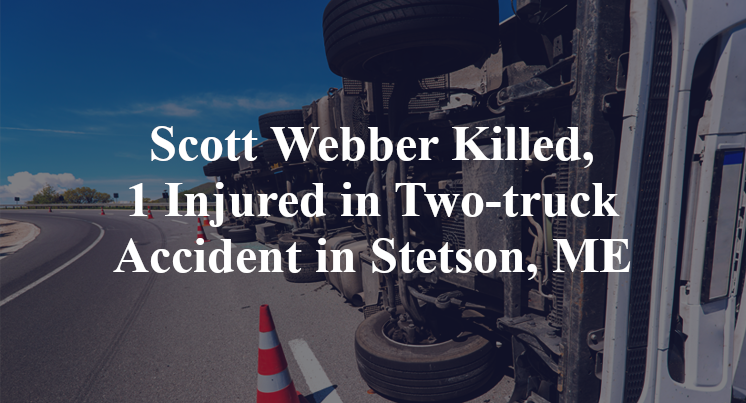Scott Webber Killed, 1 Injured in Two-truck Accident in Stetson, ME
Stetson, ME — July 23, 2025, Scott Webber was killed and another person was injured due to a two-truck accident sometime in the afternoon on Lapoint Road.
According to authorities, 64-year-old Scott Webber was traveling in a southbound dump truck on Merrill Road in the vicinity of the Village Road intersection when the accident took place.

An 18-wheeler was heading northbound on Lapoint Road at the same time, also approaching the Village Road intersection. Officials indicate that, for as yet unknown reasons, the 18-wheeler allegedly failed to stop for a stop sign. A collision consequently took place between the 18-wheeler and the dump truck.
Webber reportedly sustained critical injuries due to the accident; he was transported toward an area medical facility by EMS in order to receive immediate treatment. However, reports state that he was ultimately unable to overcome the severity of his injuries, having passed away while in route.
The 39-year-old man who had been behind the wheel of the 18-wheeler suffered serious injuries, as well, and was taken to a medical center for treatment. Additional details pertaining to this incident are not available at this point in time. The investigation is currently ongoing.
Commentary by Attorney Michael Grossman
When a truck reportedly runs a stop sign and collides with another heavy vehicle at an intersection, most people’s first reaction is disbelief—how does a professional driver miss something as basic as a stop sign? But that’s exactly the kind of question investigators have to get to the bottom of, because when a failure like that costs someone their life, it’s not enough to chalk it up to human error and move on.
At this stage, the allegation is that the 18-wheeler failed to stop. If that’s true, the next question is why. Was the driver distracted or impaired? Did he misjudge the intersection? Or was there a mechanical failure—brake fade, for instance—that made stopping impossible even if the driver tried? The answers to those questions won’t come from assumptions; they’ll come from data, inspection reports, and scene analysis.
A case like this demands a close look at the 18-wheeler’s engine control module (ECM), which can reveal whether the brakes were applied and how fast the truck was moving before impact. Investigators should also examine whether the stop sign was clearly visible. Were there tree branches or poor lighting that might have obscured it? Was the intersection marked properly for northbound traffic? These sound like small details, but they can be decisive when determining fault.
Crashes like this often raise concerns about scheduling pressure or driver fatigue. In similar circumstances, drivers nearing the end of their legal hours may feel pressure to complete a route before their time runs out. That kind of urgency doesn’t excuse mistakes, but it may explain why a driver failed to notice or respond to a stop sign in time. Whether that dynamic played a role here is something only a thorough investigation can determine.
Right now, it’s too early to say exactly what happened or who’s ultimately responsible. But a crash like this is rarely about just one missed stop—it’s usually the result of a chain of failures, some visible and some buried in paperwork and policy decisions. Only by digging into all of it can the truth come to light.
Key Takeaways:
- The 18-wheeler is alleged to have failed to stop at a stop sign, leading to a fatal collision with a dump truck.
- Investigators will need to examine ECM data, brake function, and visibility conditions at the intersection.
- Mechanical failure, driver distraction, or fatigue are all possible contributing factors.
- Scheduling pressure is a common issue in similar cases and may warrant scrutiny here.
- Determining accountability depends on a full reconstruction of events—not surface-level assumptions.

“These are essential reads for anyone dealing with the aftermath of a truck wreck”– Attorney Cory Carlson